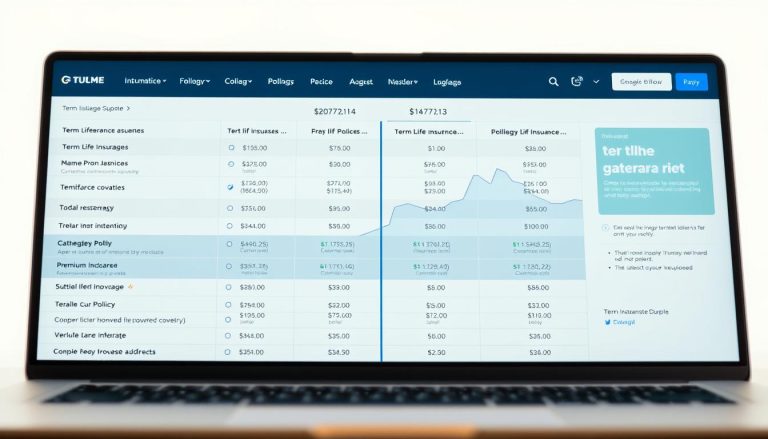Why Apply For A Medicare Advantage Plan in 2025: Strategic Healthcare Choices for Seniors
Medicare Advantage Plans in 2025: What Seniors Need to Know Before Choosing Coverage
The Medicare Advantage Plan continues to evolve at a rapid pace, making informed Medicare decisions more critical than ever for America’s seniors. Medicare Advantage plans have emerged as a popular alternative to Original Medicare, offering comprehensive coverage options that extend beyond traditional benefits. Understanding these plans in today’s healthcare environment requires careful consideration of how they’ve adapted to meet the changing needs of older Americans.
The Foundation: Understanding Medicare Basics in Today’s Healthcare System
Medicare provides essential health insurance coverage to over 65 million Americans, primarily those aged 65 and older. The program divides coverage into distinct components that address different healthcare needs. Medicare Part A covers hospital care, skilled nursing facilities, and some home health services, while Part B encompasses outpatient care, preventive services, and medical equipment.
Recent changes to Medicare regulations have expanded telehealth coverage and preventive care options. These modifications reflect a growing emphasis on proactive healthcare management rather than reactive treatment. Understanding these foundational elements provides essential context for evaluating Medicare Advantage as a potential coverage strategy.
Medicare eligibility criteria remain consistent for most Americans, with qualification at age 65 or through specific disability qualifications. Most seniors become eligible for premium-free Part A based on their work history, though Part B requires a monthly premium that adjusts annually based on inflation and program costs.
How Medicare Advantage Plans Differ From Traditional Coverage
Medicare Advantage plans (Part C) represent a fundamental shift in Medicare delivery, with private insurance companies providing coverage that must include all Original Medicare services. These plans typically add benefits unavailable through traditional Medicare, creating a more comprehensive healthcare package. Unlike Original Medicare’s fee-for-service model, Advantage plans often implement managed care approaches to coordinate treatments and control costs.
The structure of Medicare Advantage plans varies significantly among providers and regions. Most plans operate through defined provider networks, though network sizes and flexibility differ substantially between HMO, PPO, and Special Needs Plans. This network-based approach contrasts sharply with Original Medicare’s nationwide provider access model.
Current Medicare Advantage enrollment has reached historical highs, with approximately 52% of eligible beneficiaries now choosing these plans over Original Medicare. This trend reflects growing consumer interest in comprehensive coverage and predictable cost structures, particularly as healthcare expenses continue to rise for seniors.
Key Benefits Driving Medicare Advantage Popularity
Comprehensive coverage represents perhaps the most compelling advantage of these plans in today’s healthcare environment. Beyond the required Original Medicare services, most Advantage plans now include prescription drug coverage, eliminating the need for a separate Part D plan. This integration simplifies both enrollment and ongoing healthcare management for beneficiaries.
Many Medicare Advantage plans have expanded supplemental benefits in recent years to address aspects of health previously considered outside traditional medical care. Vision, dental, and hearing coverage have become standard in many plans, addressing crucial needs that Original Medicare doesn’t cover. Additionally, innovative benefits like transportation assistance, meal delivery for post-hospital care, and home safety modifications reflect a more holistic approach to senior health.
Cost predictability has emerged as another significant advantage in the current economic climate. While Original Medicare has no out-of-pocket maximum, most Advantage plans implement annual spending caps that protect beneficiaries from catastrophic costs during serious illness. This financial protection provides valuable peace of mind for those managing retirement budgets amid rising healthcare costs.
Navigating Potential Trade-offs and Limitations
Network restrictions represent the most significant consideration for many seniors evaluating Medicare Advantage options. Unlike Original Medicare’s nationwide access, most Advantage plans limit coverage to specific provider networks within defined geographic areas. These limitations can impact access to specialists or create complications during travel, though many plans have implemented travel coverage provisions for emergencies.
Prior authorization requirements have increased across most Medicare Advantage plans, reflecting broader healthcare industry trends toward utilization management. These requirements mean certain procedures, medications, or specialist referrals need advance approval from the insurance provider. While designed to control costs and ensure appropriate care, these processes can sometimes delay treatment or create administrative hurdles.
Plan variability across regions has grown more pronounced in recent years, with significant differences in available options between urban and rural areas. Seniors in metropolitan regions typically access dozens of competing plans with varied benefits, while those in rural communities may find more limited choices. This geographic disparity requires careful evaluation of locally available options rather than relying on national trends.
Selecting the Right Medicare Advantage Plan for Individual Needs
Provider network compatibility deserves primary consideration when evaluating plan options. Maintaining relationships with trusted healthcare providers often outweighs other factors for many seniors. Most Medicare Advantage providers offer online tools to verify network participation, making it possible to confirm whether current physicians participate before enrollment.

Prescription drug coverage analysis has become increasingly important as medication costs continue to rise. Each Medicare Advantage plan maintains its formulary (list of covered medications) with varying cost structures. Comparing these formularies against current prescriptions helps identify potential coverage gaps or higher-than-expected costs before committing to a plan.
Additional benefits evaluation should focus on services that address specific health concerns rather than merely selecting the plan with the longest list of extras. For example, comprehensive dental coverage might provide substantial value for someone needing major dental work, while fitness memberships might benefit those focused on maintaining mobility and strength.
Medicare Advantage Innovation and Future Trends
Telehealth expansion has accelerated dramatically, with most Medicare Advantage plans now offering virtual care options that extend beyond what’s available through Original Medicare. These services provide convenient access to primary care, certain specialties, and mental health services without the need for in-person visits. This trend reflects both consumer preference and clinical recognition of telehealth’s effectiveness for many common conditions.
Personalized care management approaches have evolved substantially, with many plans implementing proactive outreach programs for members with chronic conditions. These initiatives frequently combine regular check-ins, medication management assistance, and customized education to improve health outcomes and reduce hospitalizations. The emphasis on preventive intervention represents a significant shift from traditional reactive healthcare models.
Value-based payment structures continue to reshape provider relationships within Medicare Advantage networks. These arrangements tie provider compensation partly to patient outcomes rather than solely to service volume, creating financial incentives for high-quality, efficient care. This approach contrasts with Original Medicare’s predominantly fee-for-service model and may contribute to more coordinated care experiences.
Conclusion: Making Informed Medicare Decisions
Medicare Advantage plans offer a potentially valuable alternative to Original Medicare for many seniors, combining comprehensive coverage with innovative benefits and cost predictability. However, these advantages must be weighed against network limitations and authorization requirements that may impact healthcare flexibility. The optimal choice depends entirely on individual health needs, provider preferences, and personal priorities.
The Medicare landscape continues evolving, with both Original Medicare and Advantage plans implementing new features and benefits regularly. Staying informed about these changes through annual reviews during open enrollment represents the best strategy for maintaining appropriate coverage. By carefully evaluating available options against personal healthcare needs, seniors can navigate this complex system effectively and secure the coverage that best supports their health and financial well-being.
Frequently Asked Questions
How do prescription drug costs typically compare between Original Medicare with Part D, and Medicare Advantage plans?
Medicare Advantage plans often provide more predictable prescription costs through fixed copayments rather than the percentage-based coinsurance common in standalone Part D plans. However, formulary coverage varies significantly between plans, making direct comparison essential for anyone taking multiple or specialty medications. Many Advantage plans have implemented tiered pharmacy networks that offer lower copayments at preferred pharmacies.
What happens to Medicare Advantage coverage when traveling extensively or maintaining residences in different states?
Most Medicare Advantage plans limit routine care coverage to their service area, though all plans must cover emergency care nationwide. Frequent travelers should consider either Original Medicare with a Medigap policy, which provides nationwide coverage, or Advantage plans specifically designed with travel benefits. Several national insurers now offer plans with reciprocity agreements that allow access to in-network rates across multiple states.
How have Medicare Advantage Special Needs Plans evolved to address complex health conditions?
Special Needs Plans have become increasingly specialized, with tailored programs for specific conditions like diabetes, congestive heart failure, end-stage renal disease, and dementia. These plans typically include specialized care teams, condition-specific education programs, and benefits packages designed around particular health challenges. Recent innovations include integrated community support services and caregiver assistance programs for families managing complex conditions.
What financial protection do Medicare Advantage plans provide against catastrophic healthcare costs?
Medicare Advantage plans must implement annual out-of-pocket maximums for covered services, currently averaging around $5,400 for in-network care. Once this limit is reached, the plan covers 100% of costs for covered services for the remainder of the calendar year. This protection creates meaningful financial security compared to Original Medicare, which has no spending cap and typically covers only 80% of many services.
How frequently do Medicare Advantage networks change, and what happens if a provider leaves mid-year?
Provider network changes occur with varying frequency depending on the insurance company, though most significant adjustments coincide with annual contract renewals. If a primary care provider leaves the network mid-year, Medicare Advantage plans must allow for continuity of care during a transition period and assist members in finding new in-network providers. For specialists currently providing treatment for serious conditions, plans typically allow completion of active treatment courses even with out-of-network providers.







